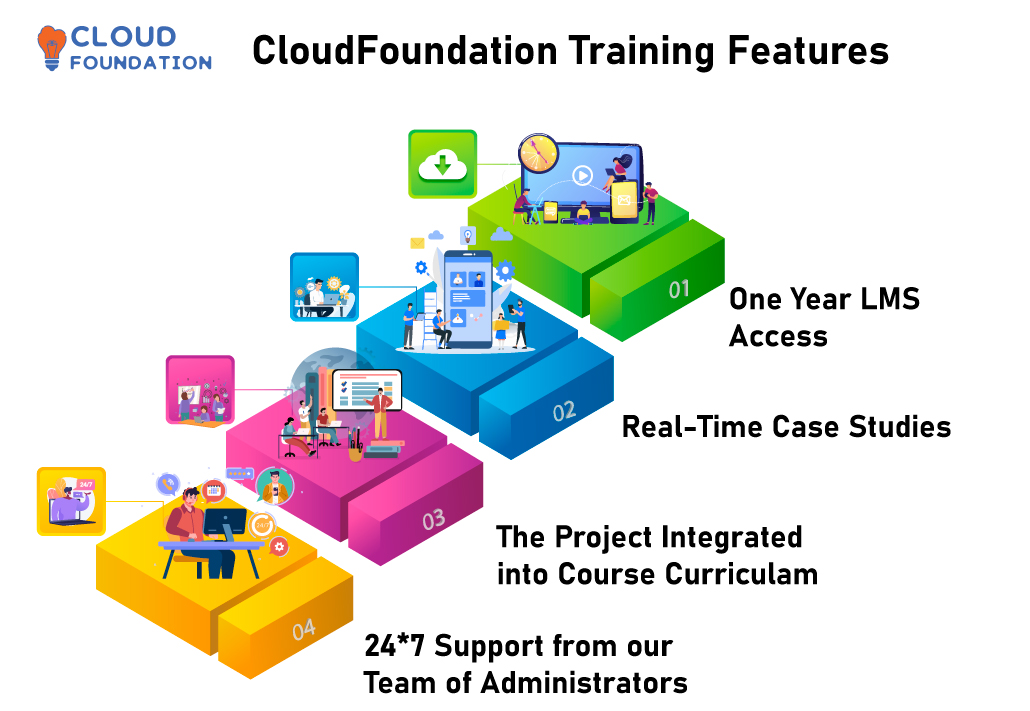SPSS Training – The only Course you need
⏰36 hours | ▶️ 36 Videos | 📣 48 Participants | 🎓 3915 Reviews | 4.8 ⭐⭐⭐⭐⭐
Choose a Plan that Works for You
Self Paced
- Advanced sessions
- Interview Q&A
- Free study Materials
- Premium Technical support
Instructor Led Live Training
- Live Instructor
- Advanced sessions
- Interview Q&A
- Premium Technical Support
Corporate Training
- Live Instructor
- Advanced sessions
- Interview Q&A
- Premium Technical Support
Upcoming Batches PST
Weekday
| Jan 12(1 HR A DAY) |
| 07:00 PM PST |
| Enroll Now → |
Weekday
| Jan 30(1 HR A DAY) |
| 06:30 AM IST |
| Enroll Now → |
Weekend
| Jan 25(1 HR A DAY) |
| 07:30 AM PST |
| Enroll Now → |
Upcoming Batches IST
Weekday
| Jan 13(1 HR A DAY) |
| 07:30 AM IST |
| Enroll Now → |
Weekday
| Jan 30(1 HR A DAY) |
| 06:30 PM IST |
| Enroll Now → |
Weekday
| Jan 25(1 HR A DAY) |
| 06:30 PM IST |
| Enroll Now → |
Course Description
In SPSS Training, students learn introductory classes about how to use SPSS.
Those who are unfamiliar with SPSS the SPSS course covers every aspect of SPSS, from data input and export to data manipulation, descriptive statistics, data analysis techniques, and charting and reporting findings.
The SPSS online course is divided into parts that cover everything from different file kinds and data sources to generating data files and setting up analysis parameters, building data reports, and analyzing their results.
The SPSS training emphasizes building practical skills and real-world applications by providing hands-on examples of each topic.
Students can confidently utilize SPSS in their research and data analysis projects after the course.
Students may also evaluate data, write valuable reports, and communicate findings to a broader group.
SPSS training is an introductory course for students who want to learn how to reliably use SPSS for data analysis.
SPSS course focuses on building practical skills and real-world applications while providing extensive, hands-on education.
SPSS Training is an excellent course for individuals who wish to learn about SPSS and obtain expertise in data analysis.
SPSS Online Training is an online course that teaches the fundamentals of data analysis using the SPSS program.
SPSS course is designed for students, researchers, and professionals using SPSS for data analysis & aims to teach students how to use the SPSS program for analyzing data.
SPSS class is meant to give students a thorough introduction to the sophisticated statistics software program.
SPSS course will cover the fundamentals of data input, hypothesis testing, data analysis, and charts and graphs.
Students will be able to understand and report SPSS results and develop SPSS models and data sets after completing the course.
This course is appropriate for students with an introductory statistics background who want to expand their knowledge and abilities in data-driven decision-making.
Those who do not have a foundation in statistics are urged to take an introductory statistics course before taking this SPSS seminar.
SPSS online course is accessible in both online and in-person forms and requires a computer with access to a copy of the SPSS program.
SPSS online class includes video lectures, a discussion room, and tests. The in-person session consists of weekly lectures and hands-on exercises.
SPSS Certification program allows users to show software expertise while increasing their abilities and marketability.
It comprises tutorials, tests, and certifications at the mastery level.
The SPSS Certification program aims to give professionals the skills and information they need to use the SPSS software to analyze data.
The SPSS interview Q & A contains complete questions and answers about the Statistical Package for Social Sciences (SPSS) program.
Installation, data types, importing data, data manipulation, statistical analyses, exporting results, and other subjects are covered.
The guide also has videos, links, blogs & materials for these tutorials. It is intended to assist researchers, analysts, and data scientists in becoming acquainted with the SPSS software.
CloudFoundation offers SPSS training for predictive and data analysis. Our SPSS Training teaches data analysis, interpretation, and application through self-paced video lessons and activities.
You’ll also learn to utilize SPSS to analyze data using sophisticated logistic regression and cluster analysis methods.
Our SPSS Training will boost your SPSS confidence and data analysis skills.

Course Content
1.Research methods
- Statistics
- The Research Process
- Initial Observation
- Generate Theory
- Generate Hypotheses
- Data collection to Test Theory
- What to measure
- How to Measure
- Analyze data
- Descriptive Statistics: Overview
- Central Tendency
- Measure of variation
- Coefficient of Variation
- Fitting Statistical Models
- Conclusion
2.Statistics
- Building statistical models
- Types of statistical models
- Populations and samples
- Simple statistical models
- The mean as a model
- The variance and standard deviation
- Central Limit Theorem
- The standard error
- Confidence Intervals
- Test statistics
- Non-significant results and Significant results:
- One- and two-tailed tests
- Type I and Type II errors
- Effect Sizes
- Statistical power
3.SPSS Environment
- Accessing SPSS
- To explore the key windows in SPSS
- Data editor
- The viewer
- The syntax editor
- How to create variables
- Enter Data and adjust the properties of your variables
- How to Load Files and Save
- Opening Excel Files
- Recoding Variables
- Deleting/Inserting a Case or a Column
- Selecting Cases
- Using SPSS Help
4. Exploring data with graphs
- The art of presenting data
- The SPSS Chart Builder
- Histograms: a good way to spot obvious problems
- Boxplots (box–whisker diagrams)
- Graphing means: bar charts and error bars
- Simple bar charts for independent means
- Clustered bar charts for independent means
- Simple bar charts for related means
- Clustered bar charts for related means
- Clustered bar charts for ‘mixed’ designs
- Line charts
- Graphing relationships: the scatterplot
- Simple scatterplot
- Grouped scatterplot
- Simple and grouped -D scatterplots
- Matrix scatterplot
- Simple dot plot or density plot
- Drop-line graph
- Editing graphs
5. Exploring assumptions
- What are assumptions?
- Assumptions of parametric data
- The assumption of normality
- Quantifying normality with numbers
- Exploring groups of data
- Testing whether a distribution is normal
- Kolmogorov–Smirnov test on SPSS
- Output from the explore procedure
- Reporting the K–S test
- Testing for homogeneity of variance
- Levene’s test
- Reporting Levene’s test
- Correcting problems in the data
- Dealing with outliers
- Dealing with non-normality and unequal variances
- Transforming the data using SPSS
6.Correlation
- Looking at relationships
- How do we measure relationships?
- Covariance
- Standardization and the correlation coefficient
- The significance of the correlation coefficient
- Confidence intervals for r
- Correlation in SPSS
- Bivariate correlation
- Pearson’s correlation coefficient
- Spearman’s correlation coefficient
- Kendall’s tau (non-parametric)
- Biserial and point–biserial correlations
- Partial correlation
- The theory behind part and partial correlation
- Partial correlation using SPSS
- Semi-partial (or part) correlations
- Comparing correlations
- Comparing independent rs
- dependent rs
- Calculating the effect size
- How to report correlation coefficients
7.Regression
- An introduction to regression
- Some important information about straight lines
- The method of least squares
- Assessing the goodness of fit: sums of squares, R and R2
- Doing simple regression on SPSS
- Interpreting a simple regression
- Overall fit of the model
- Model parameters
- Using the model
- Multiple regression: the basics
- An example of a multiple regression model
- Sums of squares, R and R2
- Methods of regression
- How accurate is my regression model?
- Assessing the regression model, I: diagnostics
- Assessing the regression model II: generalization
- How to do multiple regression using SPSS
- Some things to think about before the analysis
- Main options
- Statistics
- Regression plots
- Saving regression diagnostics
- Interpreting multiple regression
- Descriptive
- Summary of model
- Model parameters
- Excluded variables
- Assessing the assumption of no multicollinearity
- Case wise diagnostics
- Checking assumptions
- What if I violate an assumption?
- to report multiple regression
8.Categorical predictor in multiple regression
- Dummy coding
- SPSS output for dummy variables
9.Logistic regression
- Background to logistic regression
- What are the principles behind logistic regression?
- Assessing the model: the log-likelihood statistic
- Assessing the model: R and R2
- The Wald statistic
- The odds ratio: Exp (B)
- Methods of logistic regression
- Assumptions
- Incomplete information from the predictors
- Complete separation
- Overdispersion
- Binary logistic regression
- The main analysis
- Method of regression
- Categorical predictors
- Obtaining residuals
- Interpreting logistic regression
- The initial model
- Step: intervention
- Listing predicted probabilities
- Interpreting residuals
- Calculating the effect size
- How to report logistic regression
- Testing assumptions
- Testing for linearity of the logit
- Testing for multicollinearity
- Predicting several categories: multinomial logistic regression
- Running multinomial logistic regression in SPSS
- Statistics
- Other options
- Interpreting the multinomial logistic regression output
- Reporting the results
10.Comparing two means (t-test)
- Looking at differences
- A problem with error bar graphs of repeated-measures designs
- Step: calculate the mean for each participant
- Step: calculate the grand mean
- Step: calculate the adjustment factor
- create adjusted values for each variable
- The t-test
- Rationale for the t-test
- Assumptions of the t-test
- The dependent t-test
- Sampling distributions and the standard error
- The dependent t-test equation explained
- The dependent t-test and the assumption of normality
- Dependent t-tests using SPSS
- Output from the dependent t-test
- Calculating the effect size
- Reporting the dependent t-test
- The independent t-test
- The independent t-test equation explained
- The independent t-test using SPSS
- Output from the independent t-test
- Calculating the effect size
- Reporting the independent t-test
- Between groups or repeated measures?
- The t-test as a general linear model
11.Comparing several means: ANOVA (GLM)
- The theory behind ANOVA
- Inflated error rates
- Interpreting f-test
- ANOVA as regression
- Logic of the f-ratio
- Total sum of squares (SST)
- Model sum of squares (SSM)
- Residual sum of squares (SSR)
- Mean squares
- The f-ratio
- Assumptions of ANOVA
- Planned contrasts
- Post hoc procedure
- Running one-way ANOVA on SPSS
- Planned comparisons using SPSS
- Post hoc tests in SPSS
- Output from one-way ANOVA
- Output for the main analysis
- Output for planned comparisons
- Output for post hoc tests
- Calculating the effect size
- Reporting results from one-way independent ANOVA
- Violations of assumptions in one-way independent ANOVA
12.Chi-square
- Analyzing categorical data
- Theory of analyzing categorical data
- Pearson’s chi-square test
- Fisher’s exact test
- The likelihood ratio
- Yates’ correction
- Assumptions of the chi-square test
- Doing chi-square on SPSS
- Running the analysis
- Output for the chi-square test
- Breaking down a significant chi-square test with standardized residuals
- Calculating an effect size
- Reporting the results of chi-square
FAQ’s
❓ Do you offer any discount/offer?
✅ Yes, offers keep changing from time to time. You can chat with us or call our training coordinator for more details.
❓ Is there any demo video which I can watch before enrolling to the course?
✅ Yes, we have provided a Demo video section on each course page so that you can get a glimpse into the course you want to enroll.
❓ How soon after signing up would I get access to the learning content?
✅ Yes, we will provide access to all the learning materials after the complete payment for the course.
Suggested Courses




MuleSoft Training
⭐⭐⭐⭐⭐
😃 221 Learners




Pega Training
⭐⭐⭐⭐⭐
😃 391 Learners




SailPoint Training
⭐⭐⭐⭐⭐
😃 106 Learners




WorkDay Training
⭐⭐⭐⭐⭐
😃 158 Learners
A few of our students
















Contact Us